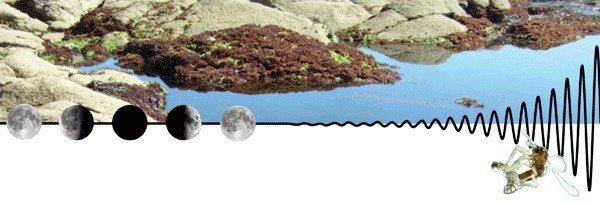
Max Planck Research Group Biological Clocks
Nature is structured in time by the continuous cycles of the seasons, night and day, the moon phases and the tides. Most organisms use endogenous biological clocks to anticipate these regular changes in their environment. To date we have a good understanding of the molecular basis of circadian clocks, which control the daily rhythms of physiology and behaviour. However, the molecular clockworks underlying seasonal, lunar and tidal rhythms are still largely enigmatic.
Our research group investigates the interplay of biological clocks with evolutionary and ecological processes - e.g. the causes and effects of different organisms occupying different timing niches. At the same time we aim to identify the molecular basis of circalunar clocks. Our model species, the marine midge Clunio marinus (Diptera: Chironomidae), allows addressing both questions simultaneously in a highly synergistic manner.
The non-biting midge Clunio marinus lives in the intertidal zone of the European Atlantic Coast. Their adult life lasts only a few hours, which are exclusively dedicated to reproduction. The delicate event of reproduction is strictly synchronised with the lowest low tides, which recur predictably during the spring tide days around both new and full moon. To achieve this remarkable synchronisation, a circalunar clock tightly regulates development and maturation of Clunio marinus, ensuring that adults can only emerge and reproduce around full or new moon. On these days, a circadian clock times adult emergence to the time of low tide. The newly emerged adults reproduce immediately and then die in the rising tide.
While the suitable tidal situation for reproduction invariably recurs at the same time of the month and day at a given location, the timing of the tides changes tremendously along the coastline. Clunio marinus populations from different places are genetically adapted to the local pattern of the tides in various aspects of their circadian and circalunar clocks. In some sites along the coast several timing strains coexist in separate timing niches.
We have shown that the heritable timing differences between strains can be exploited for genetic mapping, genome screens and comparative molecular analysis in order to identify the genes underlying local timing adaptations. Applying this approach to lunar timing adaptations promises to give access to the molecular basis of circalunar clocks.